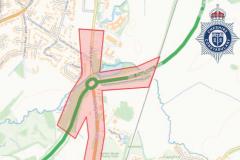
Promotional Feature
An account of the history of Alderley Edge Cricket Club has been well overdue. Four years in the making, 'Inside Edge' was launched to a packed clubhouse last November.
The book uncovers a rich vein of history running through the Club, linking back to the early settlement of Alderley Edge by the wealthy cotton magnates of Manchester and a veritable array of successful industrialists and professionals. This was following the opening of the Manchester to Crewe railway, with a station opened in 1842 at what was, in those days, the minor township of Chorley.
The Club and the villas on the Edge were all built on de Trafford land. The Stanley family being the local aristocracy who owned all the land to the south refused to sell a blade of grass. They did not like this invasion of their rural idyll, and looked down with disdain on the incomers, referring to them as Cottontots.
The book charts how the Club was founded and how it became an integral part of Victorian and Edwardian society, and then on through the 20th century to date. No sport was allowed on a Sunday until well into the 20 th century – everyone had to go to church, the well to do in the morning, lesser mortals in the evening.
Cricket was the genesis of the Club. But more than that, it was described as a gentlemen's cricket club, which speaks volumes about who might aspire to be members, and who might not. By the 1880s, croquet lawns and tennis courts had been laid out. For a time the Club hosted the northern croquet championships. However tennis soon displaced croquet not simply because of the enjoyment of this new energetic sport but suddenly young ladies and men had a place where they were able to meet without chaperones and in relative freedom. Ladies had their own lounge in the 'new pavilion' when it was built in 1899, but had to be out by 5pm when the menfolk arrived back from Manchester for an early evening drink.
Hockey has been played at the Club intermittently from 1885, but after World War 1, an application from the hockey club to play at Moss Lane was refused and they had to find a ground elsewhere, which they did at Chelford. After World War 2 they tried again, and this time they were successful, though there were some reservations on committee as to whether they were the right people for the Club. The section expanded quickly and by the end of the 1960s there were six teams. When squash arrived on the national sporting scene the Club embraced it in a big way, investing in the construction of two squash courts in the early 1970s, and then another two a few years later. The section was soon oversubscribed.
So the four section club as it exists today was born, and so also were a whole lot of new issues, not least how parity would be achieved between the different sections in terms of funding. The four sections have all seen great sporting success. The Club has been the home to many accomplished sports men and women a good few of whom have gone on to play for their county and region, and some for their country.
The author Peter Higham provides a colourful story of Club life over 150 years interspersed with many anecdotes from all corners of the Club together with fascinating historic photographs and plans, as well as his own insights based on his 50 years as a member.
As well as being of great interest to members, the book also makes an important contribution to the overall history of the village and surrounding area. It should therefore provide much interest to a wider readership as well as those interested in the evolution of a gentlemen's cricket club into the open and diverse multi sporting hub with some 1600 members which exists today.
Price £30.00 (By post £36.50)
Purchases at the Club or email [email protected]
Mounted signed prints of the water colour on the front cover are also available at £40.








